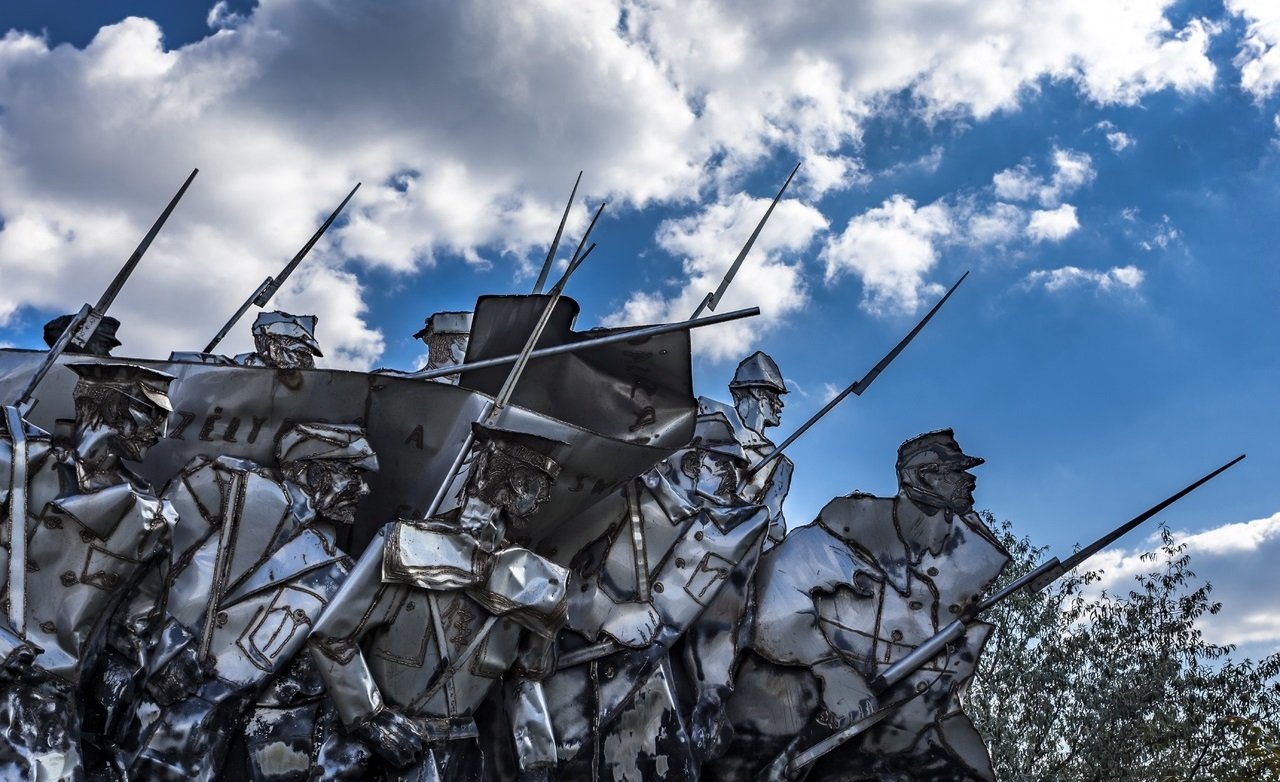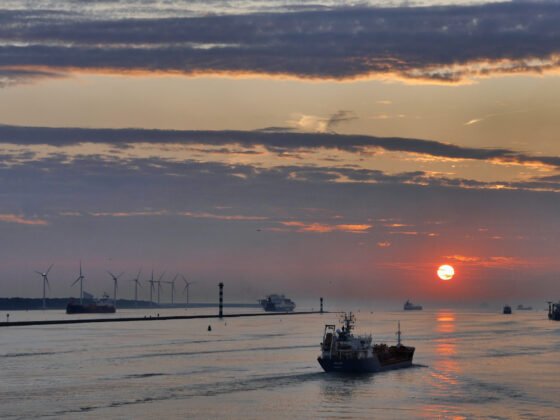(PONARS Eurasia Policy Memo) The “escalation strategy” has been a constant element in Russia’s international behavior for the last twenty years. Stemming from the well-known “escalation for de-escalation” principle that first appeared in the Russian Military Doctrine of 2000, it made the long journey from being a pure deterrence tool during the years of Russia’s (conventional-weaponry) inferiority to gaining more and more coercive functionality, especially after the Russian-Ukrainian crisis of 2014. Since then, we can observe through Russian actions its evolution from the military (mostly nuclear) sphere into foreign affairs as a coercive, military-based tool serving the Kremlin’s political goals. The relatively sudden increase in tension between Russia and Ukraine at the beginning of this year coincided with provocative moves, such as Ukraine turning off the water supply to Crimea and new U.S. President Joe Biden calling Russian President Vladimir Putin a killer. Precipitously, Moscow deployed an unprecedented concentration of troops at Ukraine’s border. Policymakers and journalists discussed the possibility of a Moscow offensive, perhaps further changing the borders of Europe. In the end, Moscow’s concerns were addressed, perhaps via the “professional” conclusion of the Biden-Putin summit in June, and Ukraine’s Euro-Atlantic integration remained unchanged.
From Yugoslavia to Ukraine
The first reference to the escalation strategy in the official Russian mindset appeared in 1999-2000 as an immediate reaction to the NATO-Kosovo war. Being commonly criticized for the same things as Yugoslavia’s Milošević regime, such as authoritarianism and the repression of minorities connected with the Chechen wars, Russia had quickly drawn its conclusions. The first was that even the Russian veto as a U.N. Security Council member could not stop NATO’s intervention in the Yugoslav conflict, which confirmed the reduction of Moscow’s global political influence. The second conclusion was about the necessity of providing strong deterrence, which looked beyond the capacity of Russian conventional forces at that time. Since 2000, Moscow proclaimed the possible use of nuclear weapons in conventional conflicts “in critical circumstances” and also assented to the possibility of nuclear employment in the regional wars. Nuclear escalation was thus officially proclaimed as a means of terminating conflicts “on terms favorable to Russia.”
According to the U.S. Nuclear Posture Review (NPR) in 2018, the Russian nuclear strategy calls for the early use of nuclear weapons in the event of a conflict with NATO to coerce a major adversary to step back from interfering in a regional conflict. In particular, the NPR states, “It [Moscow] mistakenly assesses that the threat of nuclear escalation or actual first use of nuclear weapons would serve to ‘de-escalate’ a conflict on terms favorable to Russia.” By proclaiming the early use of nuclear weapons in regional conflicts, Moscow established red lines for the West. Having signaled that any military interference in its vital sphere of interests would be punished with nuclear weapons, Russia, however, left some ambiguity. In particular, what interests, besides its internal issues, are considered vital?
The war with Georgia in 2008 and especially the Ukraine conflict of 2014 have shown that Moscow still very much perceives the post-Soviet space as its vital sphere of interest. The Russian annexation of Crimea from Ukraine was partially the result of Russian fears of witnessing a NATO military presence on its strategic flank. At the same time, the governmental change in Ukraine was regarded as a U.S. attempt to shift the Ukrainian regime, spreading fear of a similar revolution in Moscow. Inside Russia, the Crimea issue was presented as a great political victory—rather than a military victory. It was a strong coercive element in Moscow’s strategy, aimed at showing NATO that its military interference in areas vital to Russian interests would have consequences for the Alliance. Even more, for the first time in its declaratory policy in 2015, Moscow indirectly used the nuclear card just to show the West that Crimea’s annexation was non-negotiable without a war. Later in 2020, “The Fundamentals of Russia’s Nuclear Deterrence State Policy” strengthened this red line by proclaiming Russian territorial integrity as the main object being secured by its nuclear deterrence. In practice, it communicated the inclusion of Crimea in the Russian nuclear deterrence perimeter as a fait accompli.
On the one hand, it was also clear that neighboring states such as Ukraine or Belarus were included in Russia’s sphere of vital interests. Russia has retained a certain ambiguity concerning its perception of the Baltic states’ geopolitical place—are they part of Russia’s vital interests? In 2015, referring to Crimea, the Russian media spread information that the Russian General Prosecutor’s Office had begun looking into the legitimacy of the acquisition of independence by Latvia, Lithuania, and Estonia in 1991. These actions were accompanied by a massive concentration of Russian troops at its western borders as well as provocative Russian bomber flights over NATO territory. However, the fact that since 2014-15, Moscow has never proceeded further than intimidating maneuvers on Baltic state borders shows the Kremlin’s lack of interest in a military conflict in that area. Moscow’s main message constantly transmitted to the West is about the importance of Russian territorial integrity, now updated with Crimea, and about how its vital interests remain connected to any post-Soviet space not yet integrated into NATO.
Despite its apparent low interest in actually undertaking this scenario, Russia’s best coercive tool against Western powers is its potential capability to take over the Baltic states. Its nearby military actions have been aimed at showing how easily Moscow could repeat the Ukrainian scenario in the Baltics. By supporting and regularly supplying information to the Russian population across the Baltic area, Moscow further has demonstrated its potential to carry out a hybrid occupation there. Moscow tries to give NATO a choice: start a military conflict with a nuclear-armed Russia or surrender the Baltics, which would bury the Alliance as a viable organization. A recent analysis based on war games conducted by the RAND Corporation concluded that under the present circumstances, NATO has very weak chances of winning if it starts a conflict with Russia at the Baltic border. In particular, Moscow’s preponderance of conventional forces and its air defenses have made Moscow’s escalation dominance undeniable, while, for its part, NATO has not had enough assets and military infrastructure for defeating Russia. Adding to that the low credibility of NATO’s nuclear use (as it would not lead to any victory over Russia), the situation looks disastrous for NATO in the case of such conflict. This scenario is truly understood and exploited by Russia all the time, leaving its Baltics brinkmanship to contain only a remote possibility of nuclear conflict—Russia’s territorial integrity or its vital interests would have to be severely threatened.
Moving on Ukraine, Again
The March 2021 escalation of more than 100,000 Russian troops to and along the Ukrainian border can be explained by Moscow’s usage of the escalation principle not only as an effective deterrence tool but a powerful coercive policy instrument. It was connected with the aggravation of U.S.-Russian relations, partially the interview in which Biden called Putin, a killer, and several Ukrainian anti-Russian moves, including stopping the water supply to Crimea, as well as active pro-NATO rhetoric coming from the Ukrainian authorities. Adding fuel to the fire, Kyiv has been pursuing its own military cooperation with Ankara, in particular purchasing Turkish Bayraktar TB2 drones, all of which the Ukrainian government presents as important steps in strengthening deterrence against Russia. Along with Russia’s classic fear of “losing” Ukraine, a closer look at Moscow’s motivations finds that Russia’s demonstration of power is aimed at Ukraine and the West, conveying the message that people mistaking Russia’s “good intentions for indifference or weakness… must know that Russia’s response will be asymmetrical, swift and tough.”
The recent escalation along the border reveals Moscow’s sensitivity and how it perceives anti-Russian actions in its neighborhood. It shows how Putin is always ready to unleash swift, asymmetric responses and even harsh actions, such as going into Ukraine militarily, even if just to send a message. We can remember Putin’s nostalgia for the Khrushchev era when the West was respectful to the Soviet leader and cautious about Moscow’s policies. The idea was: don’t mess with Nikita; he has a big bomb. Putin has wanted to bring this notion back, and alternates between nuclear and conventional weapons depending on which version of coercion is most credible for influencing a given situation.
For the reason behind the escalation, we must return to Russia’s fear of losing Ukraine as a buffer zone and thereby losing some of its strategic depth. To a major extent, Russia’s historic invincibility is owed to its vast territorial depth. Napoleon’s and Hitler’s invasions of Russia ended in exhaustion and defeat. After the breakup of the Soviet Union, Moscow went from being 1,300 miles from the nearest Western border to only 500 miles, which added to Putin calling the breakup of the USSR in 1991 “the greatest tragedy in history.” Russia’s unstoppable resistance (and cold winters) contributed to the famous Clausewitzian idea that Russia cannot be defeated from the outside, which probably explains Russia’s permanent striving to retain strategic depth and its high vulnerability to territorial losses. In this regard, the purpose of the escalation was a matter of forcing the West and Ukraine not to cross Moscow’s red lines. This includes preventing Kyiv from joining NATO as well as possible broader, discreet discussions about situations and conflicts in the broader Middle East, for example. As the Russian Ministry of Foreign Affairs commented in March 2021, “Even the hypothetical joining of Ukraine to the Alliance would not only stimulate an escalation in the southeast, but it might create irreversible consequences to Ukrainian statehood.” Ukraine joining NATO is for sure one of Russia’s brightest red lines.
Conclusion
We can observe the evolution of the escalation phenomenon in Russian actions from its origins as an element of Moscow’s military and mostly nuclear strategy into a component of broader foreign policy. “The escalation-détente cycle” has been shown to be not only a Russian instrument of political pressure during the most recent conventional force concentration along the Ukrainian borders, but a strategy systematically employed abusively by the Kremlin toward the Baltic states and NATO since 2015. Has Russia reached any of its goals from its strategic, escalatory moves? Biden’s call to Putin in April 2021, the meeting of the two leaders in Geneva in July, U.S. support for the Nord Stream-2 project, and the non-provision of a Membership Action Plan (MAP) to Ukraine or Georgia at the NATO June summit are all significant events that have helped the Russian leadership to overcome some of its strategic fears.
The Russian factor was not the only one involved in Western decisions on MAPs and Nord Stream-2, for example, but it was significant in tipping the scales toward outcomes favorable for Moscow. While no major actions have taken place in the Baltic region, the recent escalation at the Ukrainian border has become a central factor in pressuring the new U.S. administration and Western leaders to conclude that dialogue with Russia is necessary. To date, Moscow has withdrawn very few of its military forces from Ukraine’s borders. Therefore, even in the nearest future, one can expect an escalation strategy to be used as a coercive Russian foreign policy tool where customary diplomatic engagements are ineffective.
Image credit











